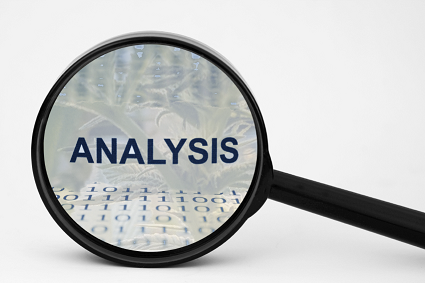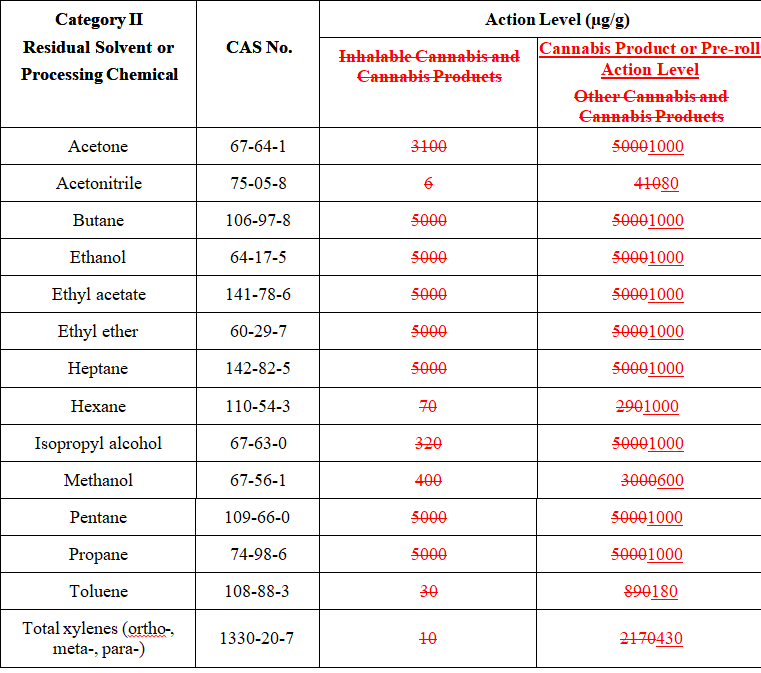
California’s three state cannabis licensing authorities have announced the publication of proposed regulations in the California Regulatory Notice Register, the first step toward adopting non-emergency regulations. This publication is the start of the formal rulemaking process and marks the opening of the 45-day public comment period.
The current emergency regulations, adopted by the Bureau of Cannabis Control, California Department of Public Health and California Department of Food & Agriculture in December 2017 and readopted in June 2018, were originally issued through the emergency rulemaking process to meet the legislative mandate to open California’s regulated cannabis market on January 1, 2018. These emergency regulations will remain in effect until the non-emergency rulemaking process is complete.
Each licensing authority’s proposed non-emergency regulations and rulemaking documents have been posted in the links below.
Bureau of Cannabis Control – Proposed Text of Regulations
CA Department of Food & Agriculture – Text of Proposed Regulations
CA Department of Public Health – Proposed Text of Regulations
What are the changes in the Draft Permanent Regulations?
The BCC and CDPH both provided a handy document that outlines the summary of changes. These documents provide details on the difference between the current, emergency, regulations and these, new, proposed regs. Click the links below to review the summary of proposed changes.
Bureau of Cannabis Control
Summary of BCC Proposed Regulatory Changes
As listed in the summary PDF, the BCC is proposing changes to the Category II residual solvent thresholds. We’ve included an image below to display current tresholds compared to the proposed:

Manufactured Cannabis Safety Branch Changes
Summary of CDPH Proposed Regulations
One of the most significant changes from CDPH was bringing back the child-resistent exit bags. It appears they would eliminate the requirement for individual CR packaging.
CalCannabis Changes
UPDATE: At the time this was written, CalCannabis did not have a summary available. That has since changed and you can see their document here: Highlights of the Proposed Changes to California’s Cannabis Cultivation Regulations
Unfortunately, CalCannabis has not provided a summary sheet of their proposed changes. Never fear because we got your back! We have dived into these and provided our own summary of changes for cultivators. Let’s get started!
We’re going to just go straight down the regulations, one section at a time. We have marked additions in green and removals in red. Our commentary will be italicized. Now, where better to start than the definitions?!
Article 1. Definitions
§ 8000. Definitions.
(b) “Applicant” means an owner of the applicant entity or sole proprietor applying for a state license pursuant to this division.
(c) “Applicant entity” means the entity or sole proprietor applying for a state cannabis cultivation license.
It appears that they’ve clarified a ‘sole proprietor’ is included in the definition of “applicant” and “applicant entity”.
(m) “Immature plant” or “immature” means a cannabis plant which has a first true leaf measuring greater than one half inch long from base to tip (if started from seed) or a mass of roots measuring greater than one half inch wide at its widest point (if vegetatively propagated), but which is not flowering.
This is quite a change to the previous definition. The definition in the current, emergency, regulations is simply: a cannabis plant that is not flowering.
It seems that the definition of “kief” has been simplified. See below:
Current: (o) “Kief” means the resinous trichomes of cannabis that may accumulate in containers or be sifted from loose, dry cannabis flower with a mesh screen or sieve.
Proposed: (o) “Kief” means the resinous trichomes of cannabis that have been separated from the cannabis plant.
(t) “Mixed-light cultivation” means the cultivation of mature cannabis in a greenhouse, hoop-house, glasshouse, conservatory, hothouse, or other similar structure using a combination of:
(1) Natural light and light deprivation and one of the artificial lighting models listed below:
(A) “Mixed-light Tier 1” without the use of artificial light or the use of artificial light at a rate above zero, but no more than six watts per square foot;
(B) “Mixed-light Tier 2” the use of artificial light at a rate above six and below or equal to twenty-five watts per square foot; or
(2) Natural light and one of the artificial lighting models listed below:
(A) “Mixed-light Tier 1” the use of artificial light at a rate above zero, but no more than six watts per square foot;
(B) “Mixed-light Tier 2” the use of artificial light at a rate above six and below or equal to twenty-five watts per square foot.
They have clarified that whether or not you use artificial lighting, light dep is considered “Mixed-light”. I wonder what the hoop house, outdoor growers think about this? It’s important to note that application and licensing fees for outdoor vs mixed-light are substantially more expensive.
(v) “Nonmanufactured cannabis product” means flower, shake, leaf, pre-rolls,and kief that is obtained from accumulation in containers or sifted from loose, dry cannabis flower,or leaf with a mesh screen or sieve.
The “Nonmanufactured cannabis product” definition has been expanded to reflect the old definition of “kief”
(x) “Outdoor cultivation” means the cultivation of mature cannabis without the use of artificial lighting or light deprivation in the canopy area at any point in time. Artificial lighting is permissible only to maintain immature plants outside the canopy area.
As mentioned above, it looks like they’re proposing that use of light dep makes you a “mixed-light” licensee. Even when only using natural lighting and no artificial lighting. If you’re an outdoor grower using light dep, you have 45 days to provide comment on this. If you disagree, be sure to give feedback! How to Submit Your Comments – Public Comment Information
(aa) “Pre-roll” means any combination of the following rolled in paper: flower, shake, leaf, or kief that is obtained from accumulation in containers or sifted from loose, dry cannabis flower,or leaf with a mesh screen or sieve.
The definition of pre-roll has been expanded and provides more specifics.
(h) The Department shall not issue any temporary licenses or extensions of temporary licenses after December 31, 2018. Any temporary licenses issued or extended with an expiration date after December 31,2018, will be valid until it expires, but shall not be extended beyond the expiration date.
We’ve been predicting that the agencies will keep temp licenses alive until 2019. Annual licenses will become active at the beginning of next year (in our opinion, this hasn’t been confirmed). Enjoy your temp while you can because by 2019 they’re gone!
Article 2. Applications.
§ 8102. Annual License Application Requirements.
(f) The hours of operation for each day of the week applicant entity will have staff on the licensed premises. Applicant must provide a minimum of two(2) hours of operation that are between 8:00am and 5:00pm (Pacific Time) on each day,Monday through Friday;
(14) If applicable, a detailed description of any administrative orders or civil judgments for violations of labor standards, any suspension of a commercial cannabis license, revocation of a commercial cannabis license, or sanctions for unlicensed commercial cannabis activity by a licensing authority, or local agency, or state agency against the applicant or a business entity in which the applicant was an owner or officer within three years immediately preceding the date of the application.
§ 8106. Cultivation Plan Requirements.
(I) Designated area(s) for physically segregating cannabis or nonmanufactured cannabis products subject to an administrative hold pursuant to section 8603 of this chapter.
§ 8201. Cultivation License Types.
(e) “Nursery” is a cultivation site that conducts only cultivation of clones, immature plants, seeds, and other agricultural products used specifically for the propagation of cultivation of cannabis.
They have expanded the language of the nursery license description.
§ 8202. General Licensing Requirements.
(g) Outdoor licensees are prohibited from using light deprivation.
There it is again…
§ 8203. Renewal of License.
Current: (a) An application for renewal of a cultivation license shall be submitted to the department at least thirty (30) calendar days prior to the expiration date of the current license. No renewal application shall be accepted by the department more than sixty (60) calendar days prior to the expiration date of the current license.
(b) If a complete renewal application is submitted in compliance with subsection (a) above, the licensee may continue to operate until the department approves or denies the renewal application. (c) If the department receives the renewal application less than thirty (30) calendar days prior to the expiration, or within thirty (30) calendar days after the expiration, of the current license, a licensee shall submit a late fee of fifty (50) percent of the application fee to be paid in addition to the required annual renewal fee.
Proposed: (a) An application for renewal of a cultivation license shall be submitted to the department no earlier than sixty (60) calendar days before the expiration of the license and no later than 5:00 p.m. Pacific Time on the last business day before the expiration of the license if the renewal form is submitted to the department at its office(s), or no later than 11:59 p.m. on the last business day before the expiration of the license if the renewal form is submitted to the department through its electronic licensing system. Failure to receive a notice for license renewal does not relieve a licensee of the obligation to renew all licenses as required.
(b) In the event an application for renewal is not submitted prior to the expiration of the license, the licensee must not sell any commercial cannabis until the license is renewed.
(c) A licensee may submit a license renewal form up to 30 calendar days after the license expires. Any late renewal form will be subject to a fee of fifty (50) percent of the application fee to be paid in addition to the required annual renewal fee.
(f) License Designation Change Request.
(1) A licensee may request a license designation change from an A-License to an M-License or an M-License to an A-License during the annual license renewal timeframes outlined in section 8203 (a-c) above for the annual license for which the license designation change is being requested.
(2) License designation changes will be considered only if the annual licensed premises for which the change is being requested contains only one A-License or only one M-License designation pursuant to Section 8102(b) of this chapter.
(3) If the department approves a request for a license designation change, the licensee isrequired to order, apply and report applicable plant and package UIDs in accordance with the applicable process and procedures developed by the department.
If A and M can all work together not sure why you would need to do this? Maybe if there’s a local change? Not sure, nonetheless this is an entirely new section.
Article 5. Records and Reporting.
§ 8405. Track-and-Trace System Reporting Requirements.
(f) Any commercial cannabis activity conducted between a temporary licensee and an annual licensee shall be reported in the track-and-trace system by the annual licensee based upon the documentation prepared pursuant to section 8401 of this chapter.
This is not a complete list of changes
We have converted all three draft regs into Google Docs with Table of Contents. It’s much easier to collaborate on the regs this way and allows everyone to highlight sections then leave comments.
For anyone interested it could be a good way for us to see what areas are most popular in regards to a public comment. Feel free to leave comments on the document or just use it for easier reading with the Table of Contents.
BCC Draft Proposed Permanent Regs
CDFA Draft Proposed Permanent Regs
CDPH Draft Proposed Permanent Regs
These are changes that we found to be most important. That doesn’t mean we caught everything, we just wanted to share our findings. Nothing on this page should be taken as legal advice. If you have specific legal needs pertaining to the regulations you should seek the counsel of an attorney.
